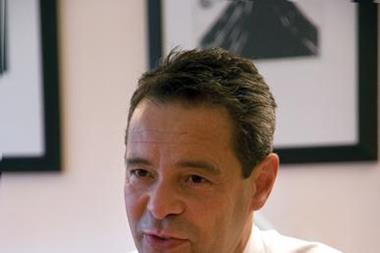News of the Heath Lambert chief's £1m deal sweetener is unlikely to impress staff fearing job cuts
The news about the size of the pay-out received by Heath Lambert chief executive Adrian Colosso as a result of his firm’s acquisition by AJ Gallagher confirms that he is the biggest personal beneficiary from 2011’s largest broker deal.
The details were contained in filings submitted by Gallagher’s parent company to the Securities and Exchange Commission, the US stock exchange regulator. These show that Colosso personally pocketed nearly £1m.
Gallagher International chief executive David Ross is currently on a tour of Heath’s regional offices. His key task will be seeking to calm nerves among the company’s staff, likely to have been further inflamed by the most recent news.
Gallagher has been keen to stress the complementary nature of the two businesses. But Ross admitted in his interview with Insurance Times at the beginning of this year - when he outlined Gallagher’s ambition to break into the retail space - that the company had inherited a surprisingly large chunk of such business when it purchased First City Partnership last year. Some cross-over is therefore inevitable.
Ross is a clear communicator with a graphic turn of phrase that steers clear of usual corporate blandishments. While it is too early to expect the full story about how the two businesses will be integrated, Heath’s troops should have at least a hint of the shape of things to come by the end of this week.
Cats start to bite
While Ross is acquainting himself with the UK’s regions, back in the Square Mile the latest Hardy results point to a turning of the tide on rates.
The first couple of months of 2011 saw a succession of disasters that would make a Hollywood blockbuster producer drool.
Lloyd’s chief executive Richard Ward warned in a speech yesterday that while the market has weathered this year’s extraordinary events so far, the next big catastrophe will start to eat into capital and not just earnings.
Hardy’s interim management statement, issued this morning, says that some of the firm’s recent rate increases have been ‘material’ and not just in those lines of business hit by recent catastrophes.
It also highlights a tightening of terms and conditions, a harbinger of rate increases to come. Hardy’s optimism on the rates front is backed up by recent comments from Novae and Catlin.
Too soon to tell whether the market is at last turning? Maybe. However, there’s a lot of 2011 still to come.
Good practice makes perfect
And finally, the industry woke up this morning to more bad headlines about the payment protection insurance (PPI) mis-selling scandal.
The number of complaints has nearly doubled over the past year, the Financial Ombudsman Services latest annual review shows. And with complaints flooding in at a rate of 5,000 a week, next year’s figure is likely to be even worse than this year’s total of 104,597.
The general insurance industry emerges from the debacle with a relatively clean bill of health. Just 2% of complaints about PPI related to general insurance companies. And the FOS’s analysis of non-PPI related insurance complaints shows that just 13% were the responsibility of intermediaries.
The potential cloud on the horizon, however, is an upsurge in motor and travel insurance complaints.
Travel is unsurprising: the FOS admits some surprise that the volume of travel-related cases was not bigger, given the massive disruption caused by the Icelandic ash cloud just over a year ago. And the 6% increase in motor cases is from a relatively low base.
However, given that the general public is unlikely to distinguish between PPI providers and mainstream insurers, the industry will have to be extra vigilant about weeding out shoddy practice.
Hosted by comedian and actor Tom Allen, 34 Gold, 23 Silver and 22 Bronze awards were handed out across an amazing 34 categories recognising brilliance and innovation right across the breadth of UK general insurance.













































No comments yet